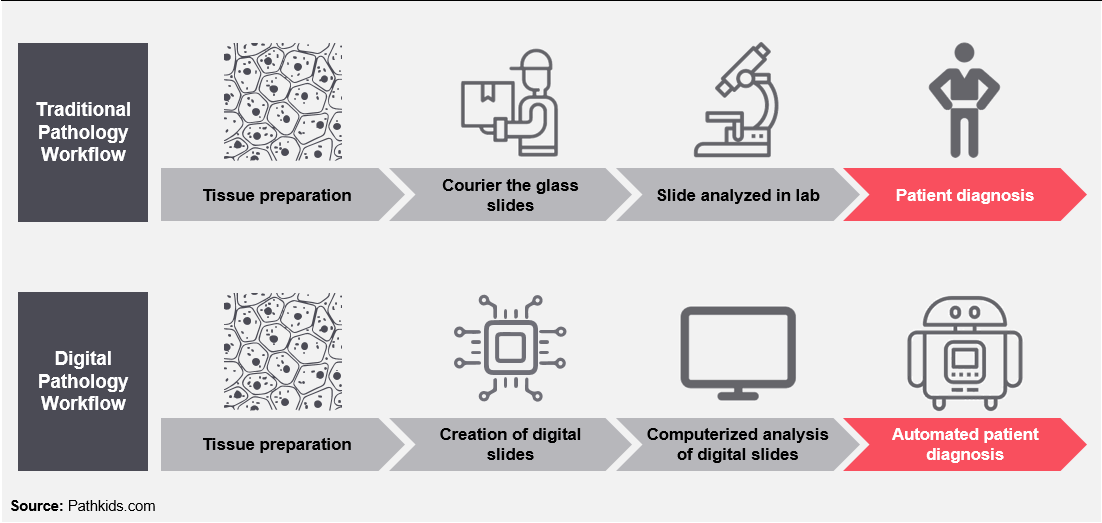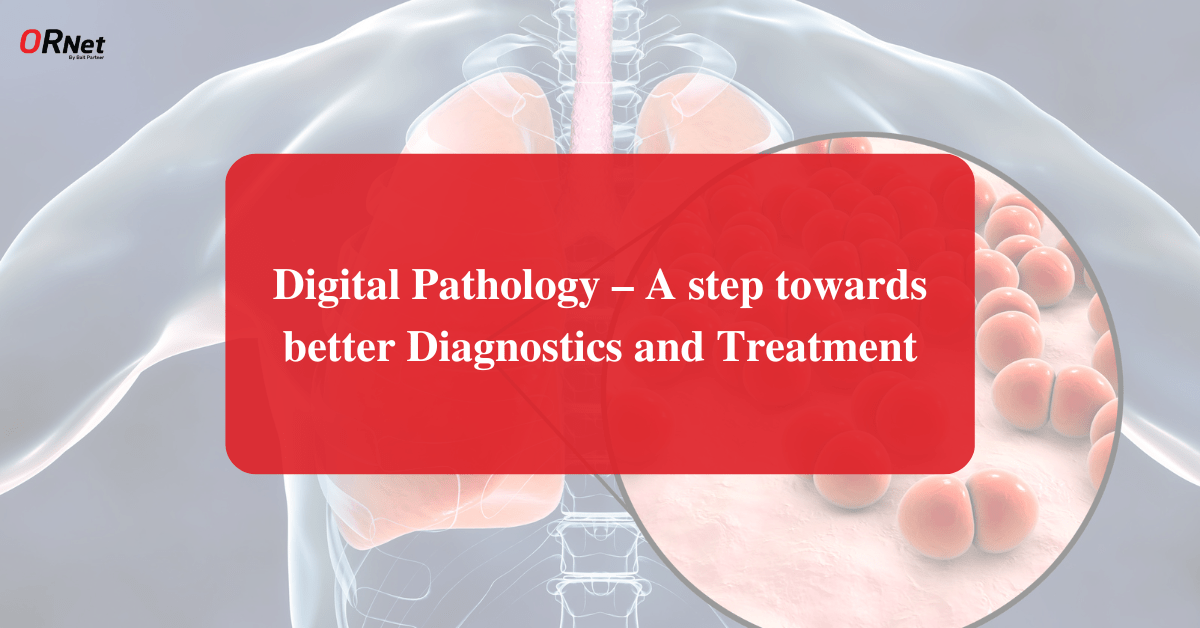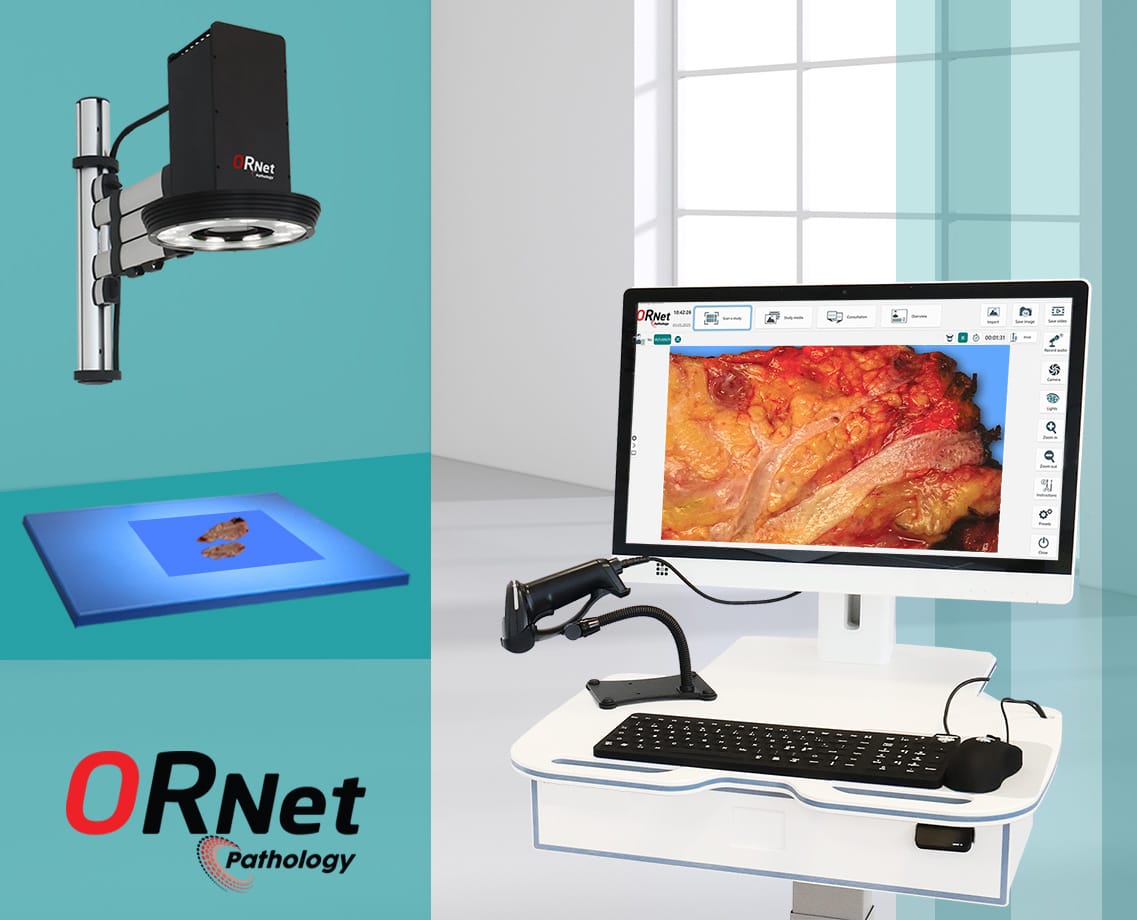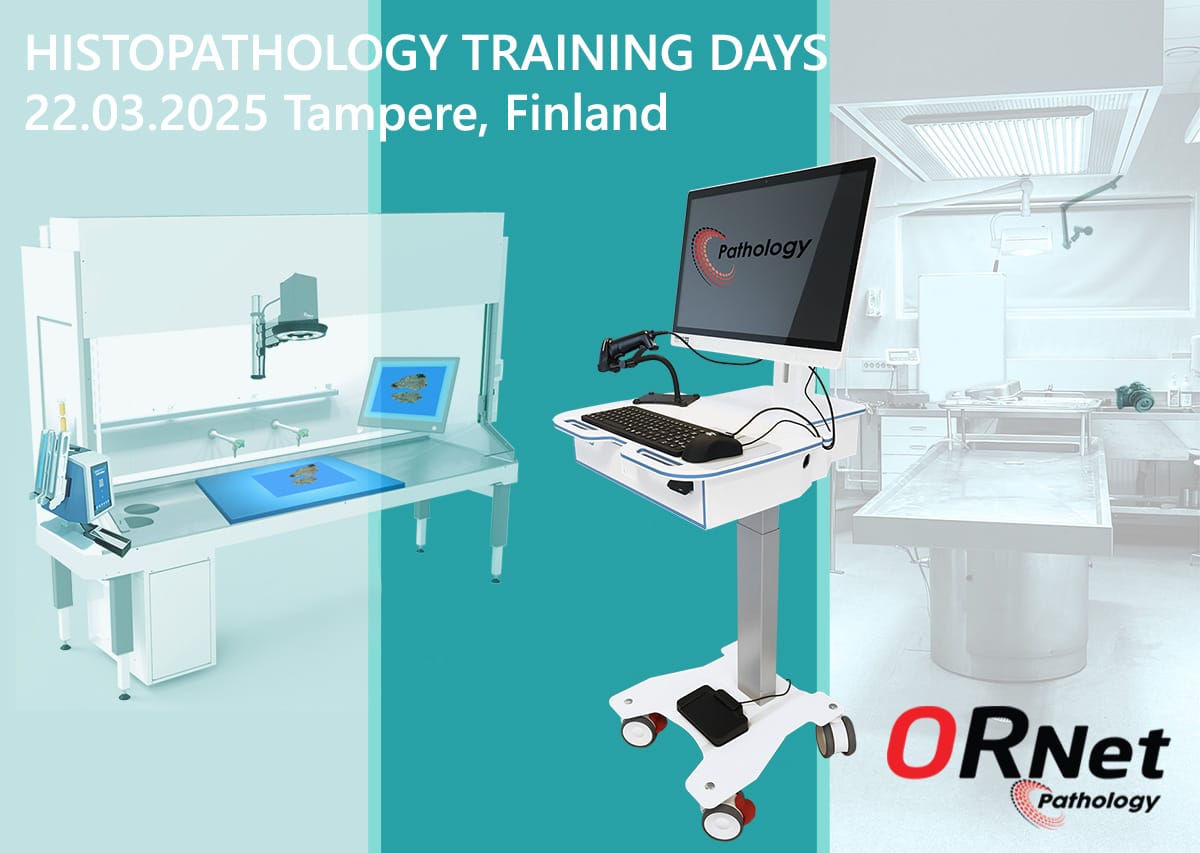Often referred to as “Bridge between Science and Medicine”, Pathology is the study of disease. It helps to understand the cause behind any disease and possible treatments. That makes it the core of diagnostic and treatment process and very crucial in the medical field.
Traditionally, pathology has been studied through the use of a microscope to examine tissues and organs from patients. This process is called histology. However, the advancement in technology brought digitized images to pathology, propelling histology to a new level, now referred to as digital pathology.
In simple words, the practice of pathology using digital images is referred to as digital pathology. It can also be said as the application of digital technology to the field of pathology.
It involves using computers and imaging software to examine images of tissue and organs for abnormalities. As a result, pathologists can diagnose diseases and help to determine the best treatment for patients.
Advantages of digital pathology over traditional histopathology
Digital pathology (DP) is an emerging field of pathology and there are several advantages to digital pathology over traditional histopathology that are bringing it one the verge of becoming the mainstream option for routine diagnostic.

Efficiency
The very first benefit of digital pathology is that it can be done in a shorter amount of time in comparison to traditional methods, thanks to faster WSI (Whole Slide Image) scanning, advanced software’s such as ORNet Pathology, and networks with high speeds.
Detailed Examination
Second, digital pathology allows for more detailed examination of tissue samples than traditional histopathology. The slides can be viewed from different angles and zoomed in when needed. Furthermore, there is the possibility of team annotations on the slides.
Accuracy
Third, digital pathology can be used to identify cancerous cells and other abnormalities more accurately than traditional histopathology. Different algorithms are in play that can analyse slides with accuracy and much faster than microscopy.
Information sharing and streamlining of the workflow
It allows pathologists to share information between different hospitals and labs easily. Furthermore, they can store images of tissue samples electronically, improving the workflow and making it possible to retrieve them whenever needed in future.
Reduction in risk of misidentification
And not just that, all the slides used in DP are barcoded, allowing pathologists to identify slides with accuracy and reduces risks of misidentification.
If we talk about it in the context of hospitals, digital pathology fosters teamwork and collaboration and streamlines the workflow because all information is readily available and can be accessed any time by authorized individuals. That improves the turn around time and brings a positive impact on the overall performance of hospitals and pathology labs.
Applications of digital pathology
DP is becoming an increasingly important tool for diagnosing and treating diseases. There are many applications of digital pathology, including:

1. Diagnosis
Digital pathology can be used to help doctors diagnose diseases by providing them with high-resolution images of tissues and organs. As a result, they can diagnose diseases such as cancer to many other in a better way.
2. Treatment
Digital pathology can be used to help doctors with determining suitable treatments for patients by providing them with images of the inside of the patient’s body and detailed analysis.
3. Research
Along with diagnosis and treatment, another application of DP is in research. Digital pathology images can be used to examine tissues and organs from patients to help researchers learn more about diseases and how they develop. As a result, the safeguard strategies can be implemented to protect people from diseases. Moreover, it can also help with paving way for cures and vaccines.
4. Education

While other DP applications have their own importance, one very important application is with reference to learning. The digital images can be used to teach medical students about the structure and function of tissues along with training of medical professionals. Considering that the number of pathologists is decreasing, this can be very useful in training new pathologists faster and overcome the issues.
Limitations of DP
The use of digital pathology has exploded in recent years as a more efficient way to view and analyse slides. However, there are still some limitations to using this technology.
One limitation is the lack of standardization. There are many different types of software available, and each one works a little differently. This can make it difficult for pathologists to share images and results between different laboratories.
Another limitation is the lack of training available for pathologists. Most pathologists have been trained to use a microscope, and they may not be familiar with how to use a computer to view slides. That becomes a serious hurdle in the adoption of DP as pathologists start resisting new technology.
Also, not all pathology labs are equipped with the necessary software to view slides electronically. Until all labs have the ability to use DP, there will continue to be a need for traditional slide microscopy.
Moreover, from a procedural point of view, the image calibration and the quality of the image can also become a problem. Though software such as ORNet Pathology & ORNet Editor allow pathologists to calibrate images with accuracy, not every pathological imaging and telepathology software might have these capabilities.
What Does the Future Hold for Digital Pathology?
There is no doubt that digital pathology is a step towards better diagnostics and treatment and the sentiment towards its future is strong. It has already shown great promise in the field of cancer research and holds much potential for other fields of medicine.
AI integration with digital pathology to automate the diagnosis process (or at least screen cases for further evaluation), improved imaging capabilities, enhanced storage and access options, and standardization are some of the aspects that are expected to become the next steps.
With continued development, digital pathology may soon become the norm in diagnostics and treatment.




1 reaktioner på ”Digital Pathology – A step towards better Diagnostics and Treatment”
Kommentarer är stängda.